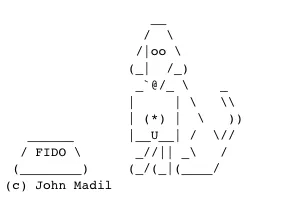BBS
'BBS: The Documentary', and my memories of dialing into computer bulletin boards
Last year I saw online a mention of the passing of Ward Christensen. In reading up about him, I then came across a documentary “BBS: The Documentary”, which included interviews with him and many other people who were involved in running computer bulletin boards (BBSs) in the 1980s and 90s. I finally got around to watching the series in the last few weeks and it brought back many fond memories. It was also fascinating putting faces to many names I had largely forgotten:
- Tom Jennings - creator of FidoNet.
- Ben Baker, Ken Kaplan
- The International FidoNet Association (IFNA) - and more of the story behind it’s implosion
- Ward Christensen - who created XMODEM - a protocol for transferring files (which was then superseded by YMODEM and then ZMODEM)
- Thom Henderson and the unfortunate drama of the around ARC (and through which we ended up with ZIP compression)

The first time I went online would have probably been when I was still at high school in the 1980s. My friend Shawn (who lived around the corner) loaned me his 300 baud modem, and I tried dialling a few of the Adelaide bulletin board systems (or BBS for short). Later on I discovered that my dad’s work had a spare 2400 modem (a ‘Scitec Business 2400’) and I was able to borrow that for quite an extended period.
From memory, the 300 baud modem was completely manual. It had a handset that you’d dial the number on, and then once the call was answered, you’d toggle a switch and then wait for the connection to hopefully work.
Most modems adopted the ‘Hayes’ AT command set, which allowed you to control the modem from your computer (including getting it to dial and hang up). The Scitec was unfortunately not quite so clever. It did have an auto-dial command (which started with ‘CRN’ - how is that still burned into my memory?!), but that was it. It was often challenging to use it with the terminal programs available at the time. QModem and Telix are two that I remember in particular.
Most BBSs had some free content, but they really wanted you to become a member and pay some kind of subscription. I eventually decided to sign up to ‘The Keyboard BBS’. I wasn’t really into messaging (this was before email) so much as wanting to download free and shareware software. FidoNet became a thing around that time, and you could in theory send a message to someone on the other side of the country or even the world. Except I didn’t know anyone interstate or overseas!
I really would have loved to have run a BBS of my own. But I was just a school kid, and my parents were barely tolerating me hogging our single phone line for hours, and a somewhat increased phone bill, so getting a second line was out of the question. Plus we only had one computer at home. Remember this is largely before the days of multitasking, so having our computer tied up as a dedicated BBS wasn’t likely.
The closest I ever came was being able to run a copy of the FidoNet software on my PC just to pretend!
Later on when I started university, I got access to the uni’s computer systems (a DEC VAX), which had some networking (DECnet I believe), internal email, and they had access to a USEnet feed. I used to read FIDO News via this. It’s also how I first learned about Minix and then the original announcement from Linus about his new ‘Linux’ operating system.
At some stage, the uni’s network added Internet Protocol and the use of BBSs to get files was replaced for me by the discovery of FTP servers. Gopher was also a thing - kind of like linked FTP sites, though that didn’t last that long once the world-wide web became a thing.
The documentary pointed out that with the rise of the Internet, most BBSs closed down due to lack of interest. The ones that stayed open pivoted to provide Internet access, becoming the first ISPs.
‘BBS: The Documentary’ was a wonderful trip down memory lane. I’m glad so many of the people involved in that part of computing history had a chance to share their stories.
Finally, even though many years have passed since I last dialed in to a BBS, it’s a pleasant surprise to find that FidoNet still exists!